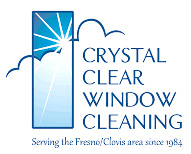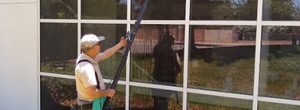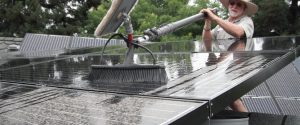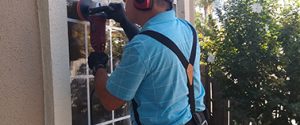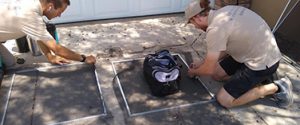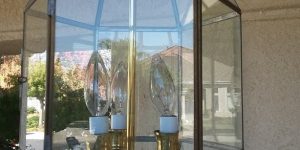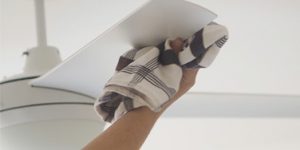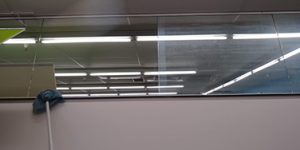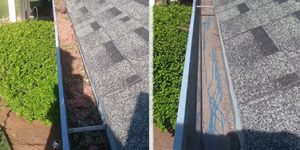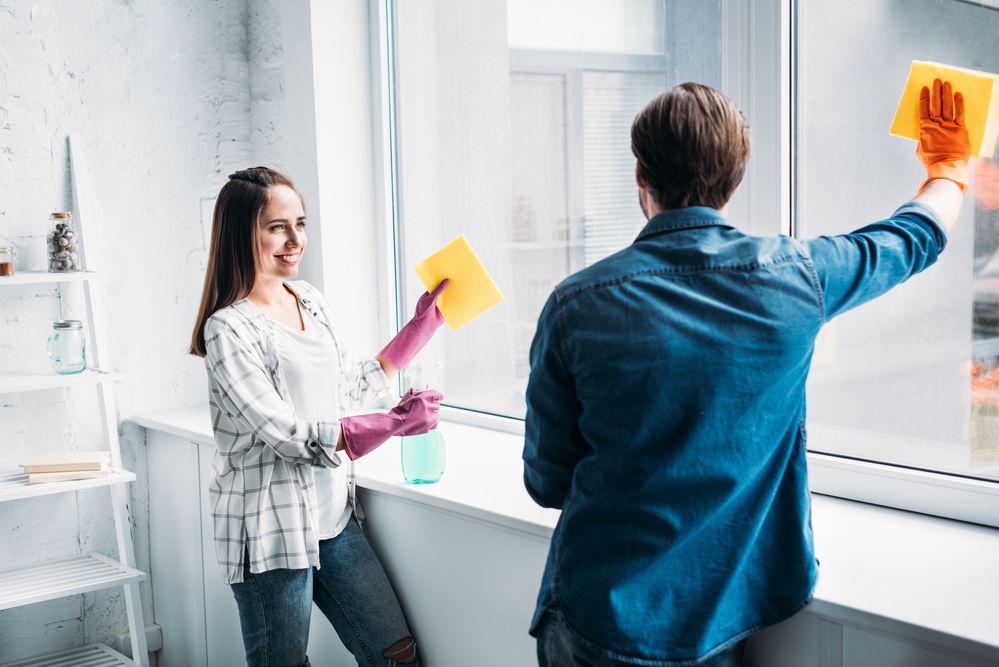Pressure Washing vs. Power Washing: Benefits, Tips, and Techniques
Exterior home or business maintenance is part of the responsibilities of a property owner. Dirt, mould, mildew, and various unpleasant grime collect on outdoor surfaces such as driveways, patios, and siding over time. Two of the most effective cleaning methods are pressure washing and power washing. Although the terms are often used interchangeably, there is a difference between the two cleaning techniques that affect their applications.
We will identify benefits and drawbacks of each process, understand how they work, and some guidelines on how to pick the best pressure washing services. Whether you are dealing with tough stains or want to improve the curb appeal, understanding the difference between pressure washing and power washing will help select the right cleaning solution for your property.
What Is Pressure Washing?
Pressure washing is the cleaning method by which dirt and grime from surfaces are removed through forceful jets of water. In most cases, it uses water at ambient temperatures only, relying on pressure and nothing more to clean. Pressure washers are utilised on surfaces made of wood, vinyl, and painted materials because applying heat can damage them.
How Pressure Washing Works
A pressure washer is simply a pump energised by a motor that forces water at a high speed through a nozzle. This creates a high-pressure water spray that dislodges dirt, mildew, and other surface impurities. In most cases, no heat or special cleaning agents are needed, but detergents may be applied to treat tough stains.
Benefits of Pressure Washing
Pressure washing gives different benefits to residential and commercial property owners.
1. Environmentally Friendly Cleaning
One of the advantages of pressure washing is that it’s an eco-friendly process. Many cleaning projects involve only water, less harsh chemicals, and the result is safer for your home, landscaping, and the environment.
2. Safe for sensitive surfaces
Pressure washing is also less aggressive compared to power washing, so it can be done on materials such as wood decks, vinyl siding, and even painted surfaces. With no heat applied there can be no warping or cracking.
3. Cost-Efficient Maintenance
Washing away contaminants like mould and algae prevents widespread destruction to your property. It could also help you save money because you will not have to do intensive repairs and replacements afterward.
4. Curb Appeal
A clean exterior does much to elevate the look of your property. For homeowners, pride of ownership is increased; for businesses, it can bring in more customers by being invited outside.
5. Preps Surfaces for Projects
Thinking of painting or staining? Pressure washing prepares surfaces by removing old paint, grime, and debris, ensuring that your finish will be smooth and last.
What Is Power Washing?
Power washing is an industrialised pressure washing that incorporates heat. Because of this, the combination of high-pressure water and heated temperatures causes it to be better than any other method to break down tough stains like oil and grease and even mildew. Power washing is best used for hard surfaces that are able to handle extreme pressure and heat like concrete, brick, and asphalt.
How Power Washing Works
Similar to power washers, pressure washers are a motorised pump which applies high pressure during the pumping of water, but its primary difference is the inclusion of a heating element that raises the temperature of the water. That high water breaks up grease and dissolves it to sanitise surfaces, which is why power washing is best used for industrial applications or highly greasy places.
Pros and Cons of Power Washing
Pros
Deep Cleaning Power
This is because power washing comes with adequate heat and pressure that effectively knocks away toughest stains such as oil spills, chewing gum, and algae.
Kills Bacteria and Mould
The heated water not only cleans but also sanitises surfaces, killing bacteria, mould, and mildew that could pose serious health risks.
Ideal for Hard Surfaces
Such hardscapes like a concrete driveway, stone patio, and metal surfaces benefit much from power washing because such materials can endure heat and pressure.
Widely Used
Power washing is widely used in the industrial world, garages, and other gathering places for grease and grime.
Disadvantages
Surface Material Destruction
The heat and strong pressure may not be suitable for wood, vinyl, or painted surfaces because they mar the surface, thus making it unsuitable for power washing.
More Expensive
Power washing machines are usually more expensive, and the energy consumed in heating up the water decreases its bottom-line friendliness compared to pressure washing.
Utility Consumption
Power washing tends to use more water than pressure washing, leading to more expensive utilities and less eco-friendly practices.
Pressure Washing vs. Power Washing: A Comparison Comparison
| Feature | Pressure Washing | Power Washing |
| Water Temperature | Ambient or cold | Heated |
| Best For | Delicate surfaces (wood, vinyl) | Hard surfaces (concrete, stone) |
| Eco-Friendliness | High | Moderate |
| Cost | Lower | Higher |
| Surface Damage Risk | Low | High on delicate surfaces |
| Cleaning Power | Moderate | Superior for tough stains |
Benefits of a Professional Pressure Washing Service
While DIY pressure washing might appear tempting, hiring professional pressure washing services offers unparalleled benefits:
- Knowledge: Professionals are best equipped with the appropriate pressure settings and techniques for every surface so avoiding damage.
- Save Time: Cleaning wide areas is time-consuming using a pressure washer. Professionals can do the work in little time and efficiently.
- All round clean
Professional services can often offer both pressure washing and power washing so that thorough cleaning can be accomplished.
- Heavy Duty tools
Professionals use industrial strength equipment, which is more powerful than consumer grade tools.
- Safety assurance
Pressure washing is very dangerous if done the wrong way. You can, therefore, get professional pressure cleaners for safety purposes for both you and your property.
How to Choose the Best Pressure Washing Services
Finding a reputable pressure cleaning company ensures you get the best. Here are some tips.
1. Experience and Expertise Check
This is about the experience that the company holds, so a better company would be one which holds years of experience and has achieved a proven record.
2. Reviews Read
Customer reviews would give an idea of the service quality. In other words, any review about the reliability, professionalism, and the results matters.
3. Insurance Inquire
The company must be well-insured in case any kind of damage occurs during the cleaning process.
4. Eco-Friendly Practices
Companies that are environmentally conscious use biodegradable detergents and water-saving techniques.
5. Compare Pricing
Request quotes from multiple companies and compare their services and pricing to find the best value.
Tips for DIY Pressure Washing
If you’re planning to take on pressure washing yourself, follow these tips for the best results:
1. Choose the Right Nozzle
Nozzles determine the spray pattern and pressure level. Use a wide nozzle for general cleaning and a narrow nozzle for tough stains.
2. Set Low Pressure
Start with the lowest pressure adjustment and increase as needed to prevent surface damage
3. Use Cleaning Solutions When Necessary
For tough marks apply cleaning detergent and let it sit before rinsing using high-pressure water
4. Maintain a Constant Distance
Operate 12–18 inches from the surface to avoid damage or streaking of surfaces
5. Protect the Surroundings
Cover nearby plants, windows, and electrical outlets to keep them dry from the water and debris.
Power Washing Techniques for Best Results
Power washing requires extra care and preparation due to the added heat:
Pre-Treat with Cleaning Agents
For oily or greasy stains, use a degreasing agent before power washing.
Monitor Water Temperature
Use no higher temperatures than the surface can withstand. Work in Sections
Clean one area at a time to ensure complete coverage with no water spots.
Inspect the surfaces constantly
Check for damage as the item is cleaned and adjust pressure or temperature as needed.
Safety Glasses and Gloves
Safety glasses and gloves are worn during power washing.
Common Mistakes People Make with Pressure Washing and Power Washing
1. Incorrect Pressure Setting
Too much pressure can strip off the paint or even etch the surfaces, while too little pressure won’t get the job done at all.
2. Failure to Maintain
Dirty or clogged equipment can affect effectiveness and may not be cleaned evenly.
3. Non-Conformity of Safe Procedures
Failure to follow safe procedures may cause accidents and damage to properties.
4. Choosing the Wrong Cleaning Solution
Harsh chemicals cause damage to surfaces as well as the ecosystem. Choose biodegradable whenever possible.
Conclusion
The maintenance of your outdoor property is quite possible with pressure washing and power washing. Pressure washing has its advantage, especially to delicate surfaces, whereas power washing is suitable for extreme jobs with unfathomable cleaning power. Differences of each method are significant and inform well-rounded decisions for your property.
Think of the best results for the job, hire a professional pressure washing service. Experts can assess your needs, recommend the proper approach, and give excellent results that protect and enhance your property.
Exterior cleaning is not strictly about looks; it’s an investment for years to come in preserving the integrity and value of your home or business.

